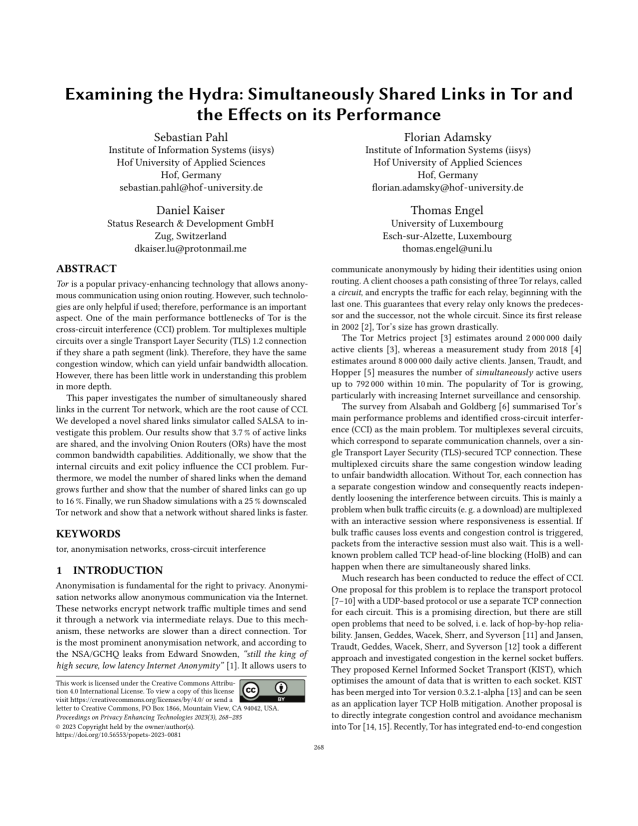Examining the Hydra: Simultaneously Shared Links in Tor and the Effects on its Performance
Authors: Sebastian Pahl (Institute of Information Systems (iisys) -- Hof University of Applied Sciences), Florian Adamsky (Institute of Information Systems (iisys) -- Hof University of Applied Sciences), Daniel Kaiser (Status Research & Development GmbH), Thomas Engel (University of Luxembourg)
Volume: 2023
Issue: 3
Pages: 268–285
DOI: https://doi.org/10.56553/popets-2023-0081
Abstract: Tor is a popular privacy-enhancing technology that allows anonymous communication using onion routing. However, such technologies are only helpful if used; therefore, performance is an important aspect. One of the main performance bottlenecks of Tor is the cross-circuit interference (CCI) problem. Tor multiplexes multiple circuits over a single Transport Layer Security (TLS) 1.2 connection if they share a path segment (link). Therefore, they have the same congestion window, which can yield unfair bandwidth allocation. However, there has been little work in understanding this problem in more depth. This paper investigates the number of simultaneously shared links in the current Tor network, which are the root cause of CCI. We developed a novel shared links simulator called SALSA to investigate this problem. Our results show that 3.7 % of active links are shared, and the involving Onion Routers (ORs) have the most common bandwidth capabilities. Additionally, we show that the internal circuits and exit policy influence the CCI problem. Furthermore, we model the number of shared links when the demand grows further and show that the number of shared links can go up to 16 %. Finally, we run Shadow simulations with a 25 % down-scaled Tor network and show that a network without shared links is faster.
Keywords: tor, anonymisation networks, cross-circuit interference
Copyright in PoPETs articles are held by their authors. This article is published under a Creative Commons Attribution 4.0 license.


